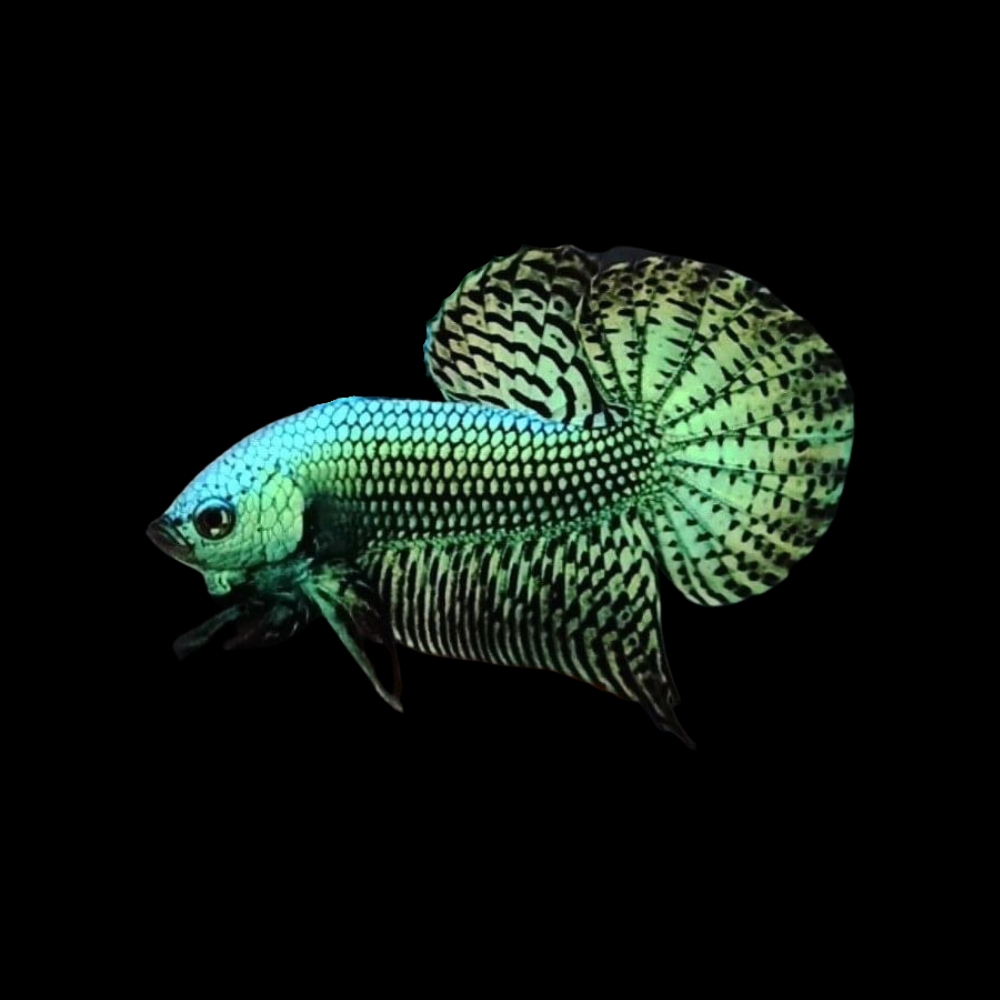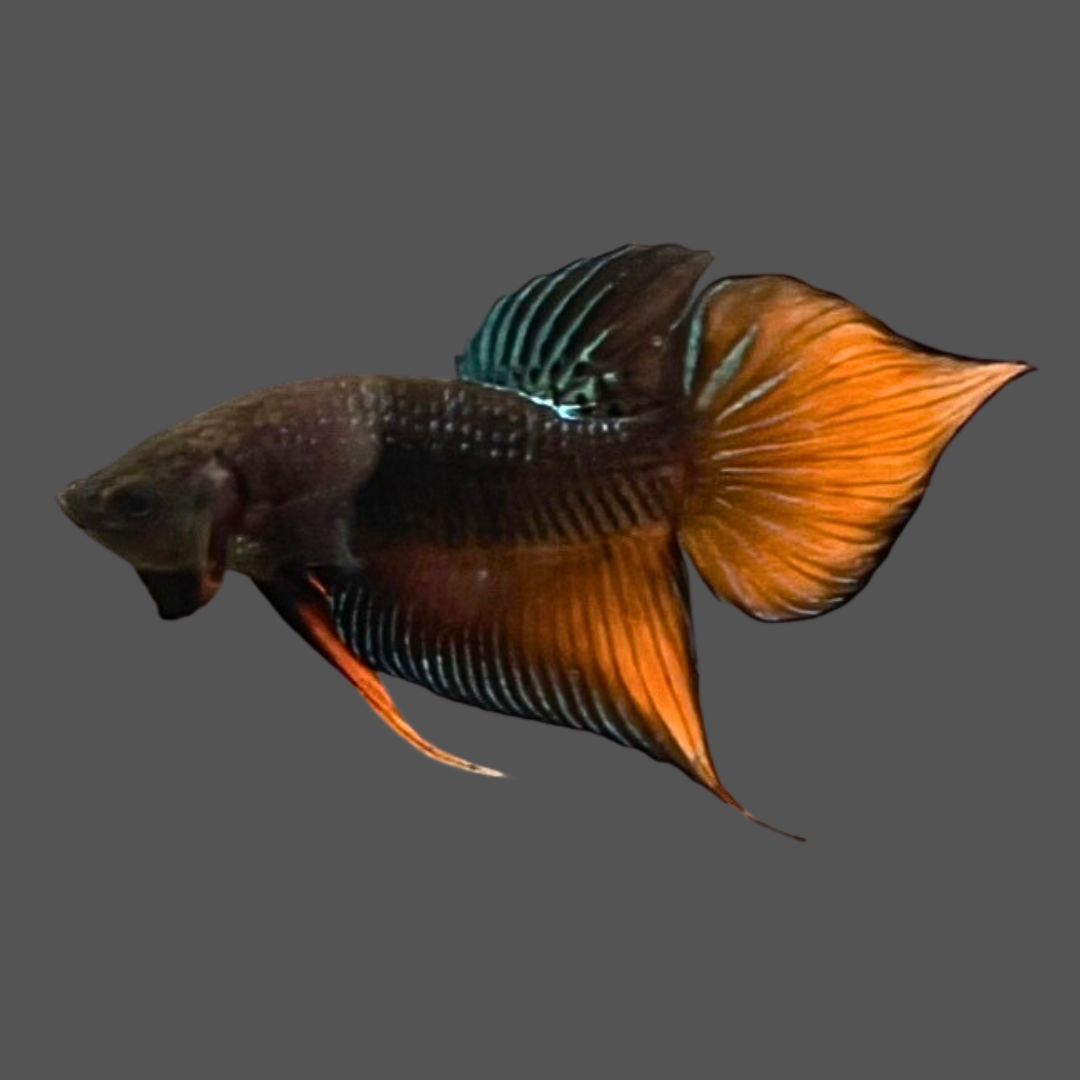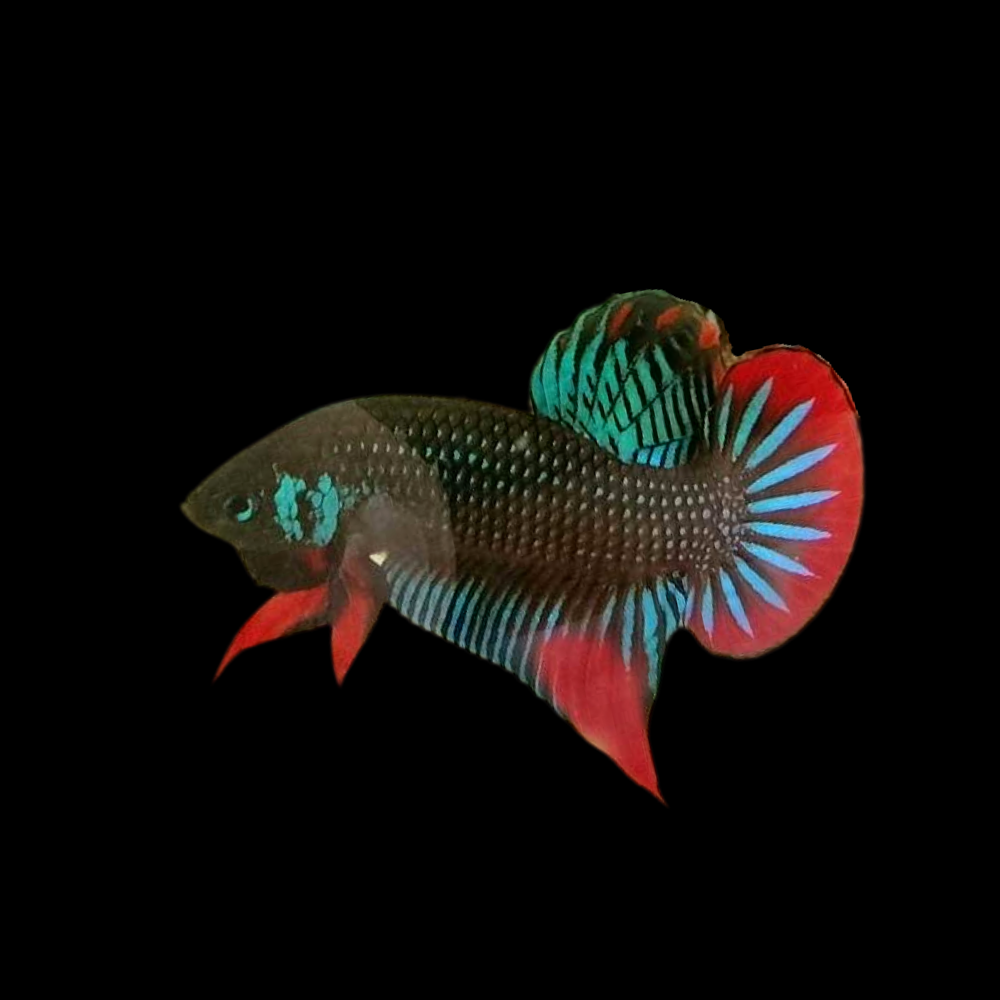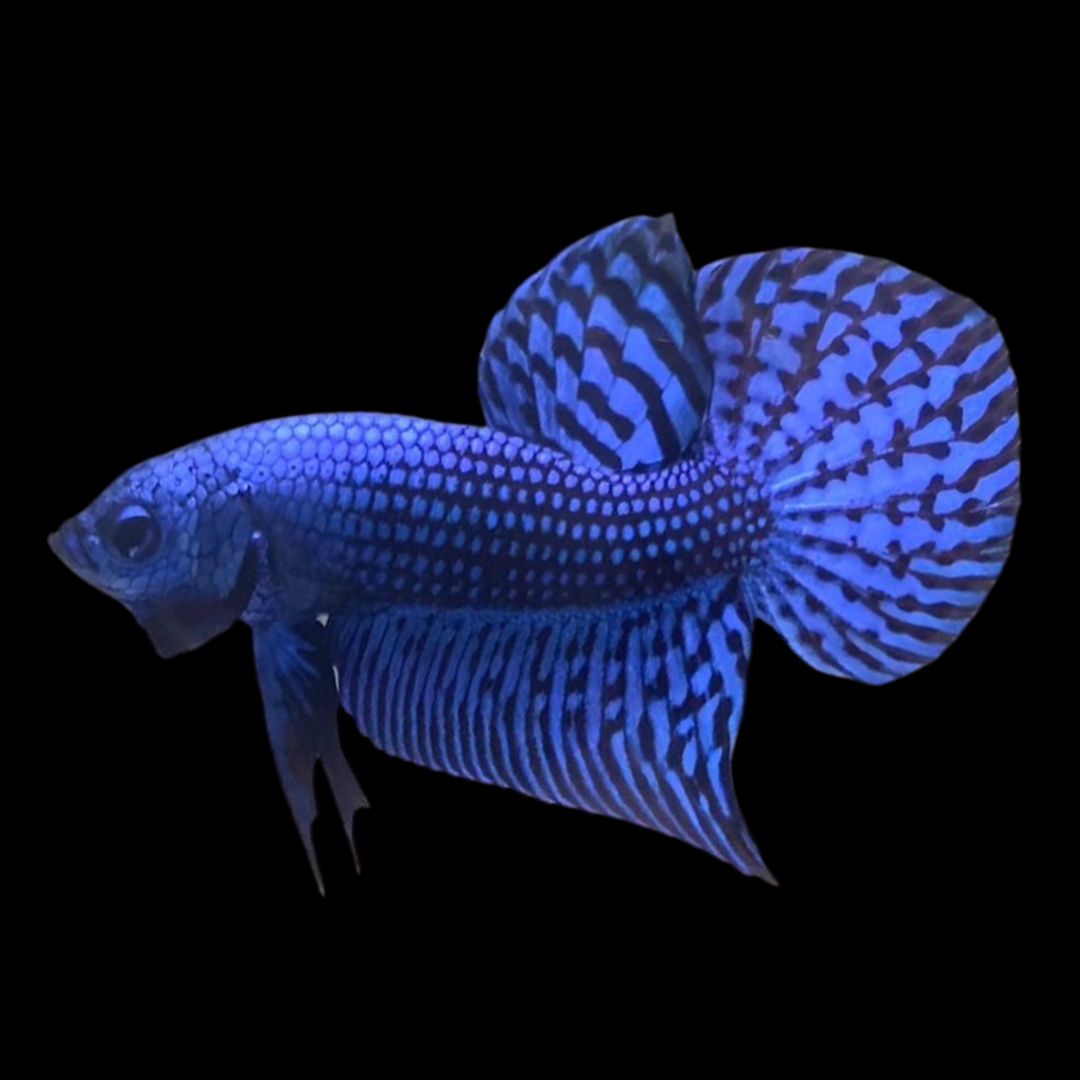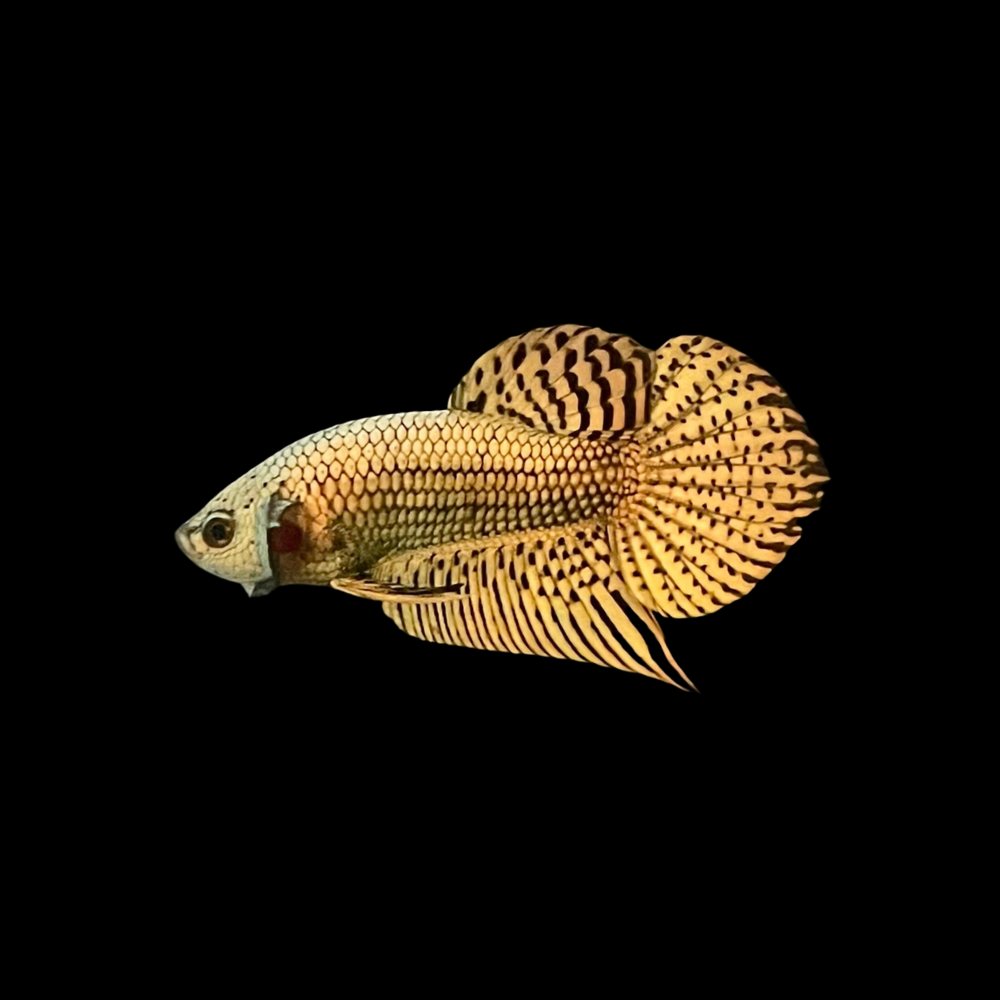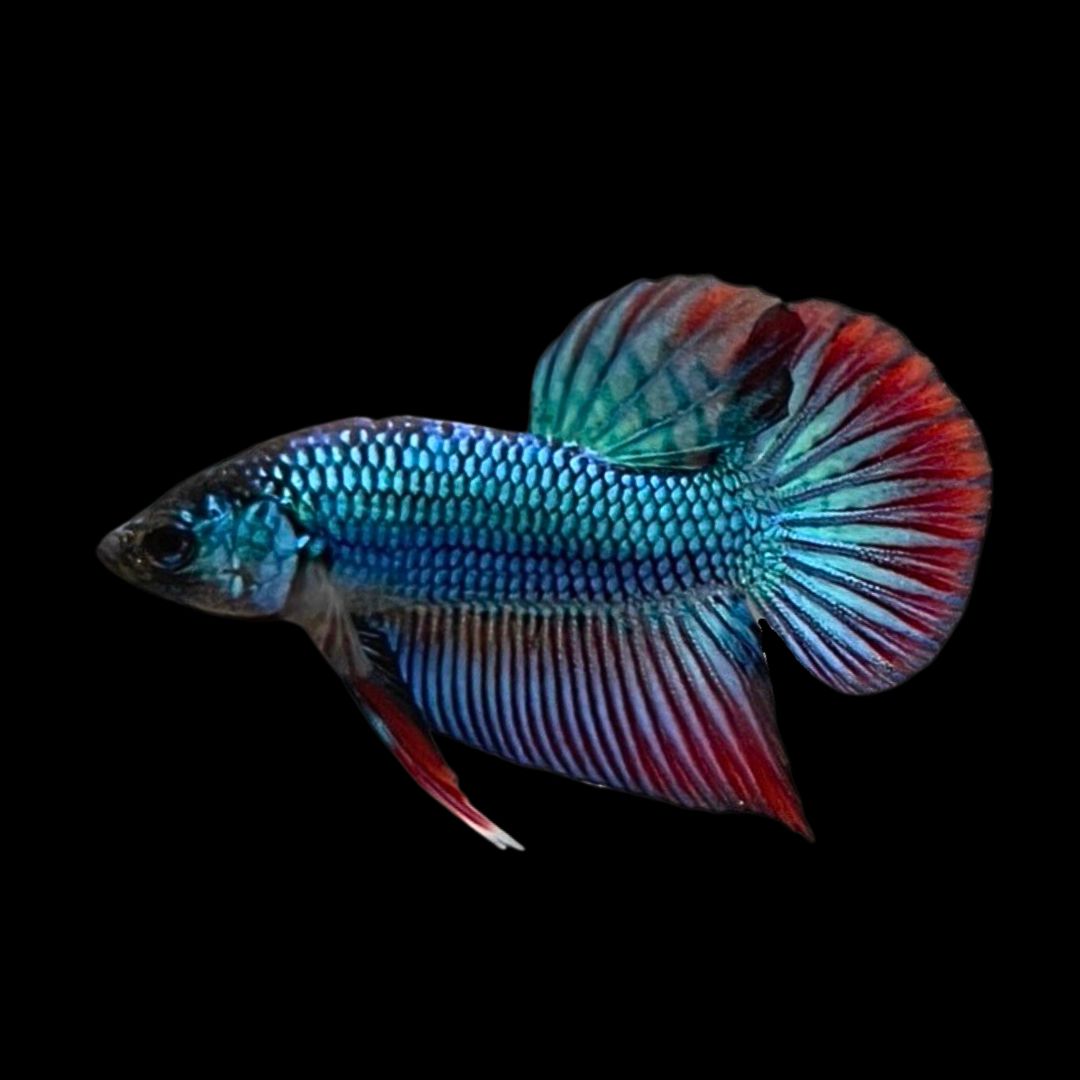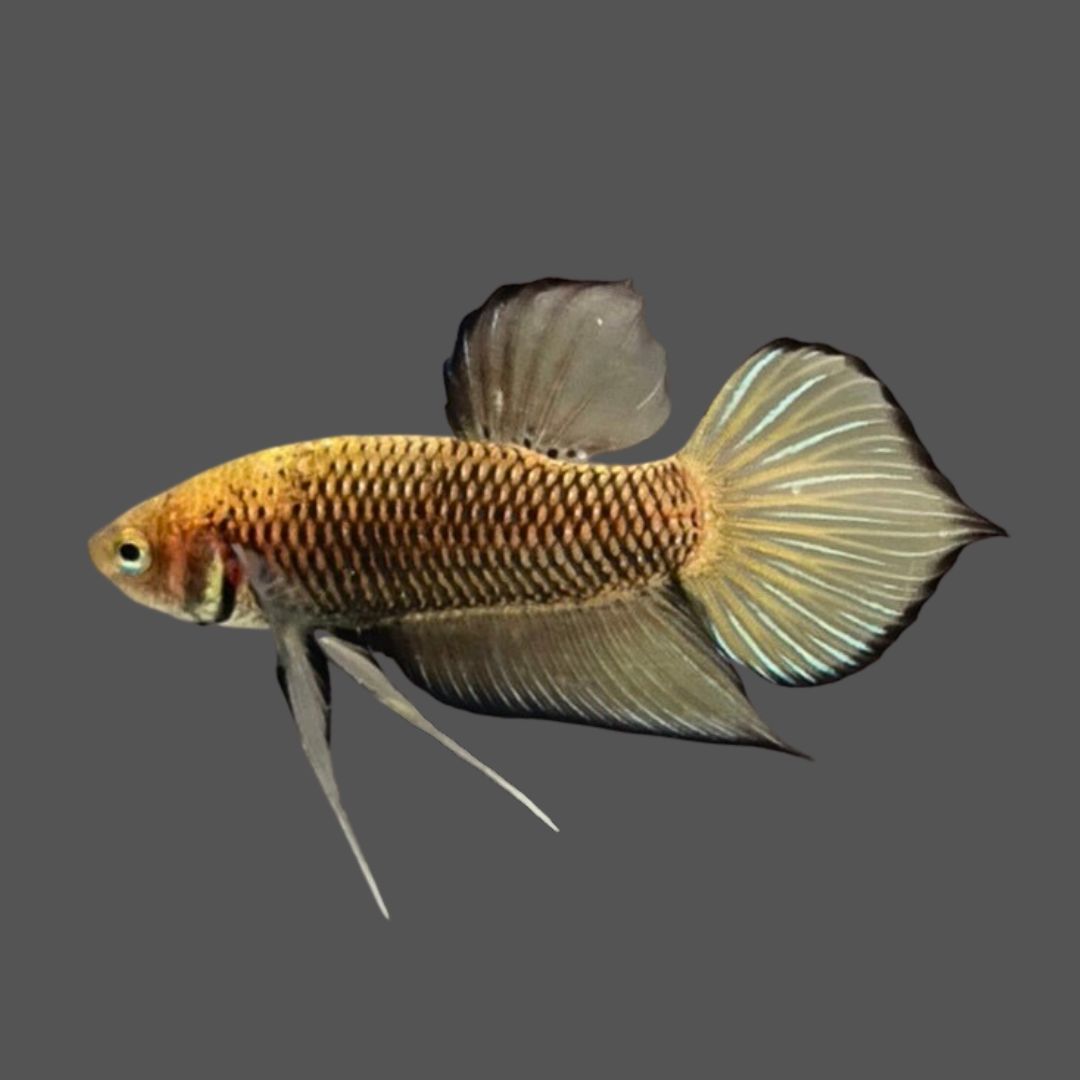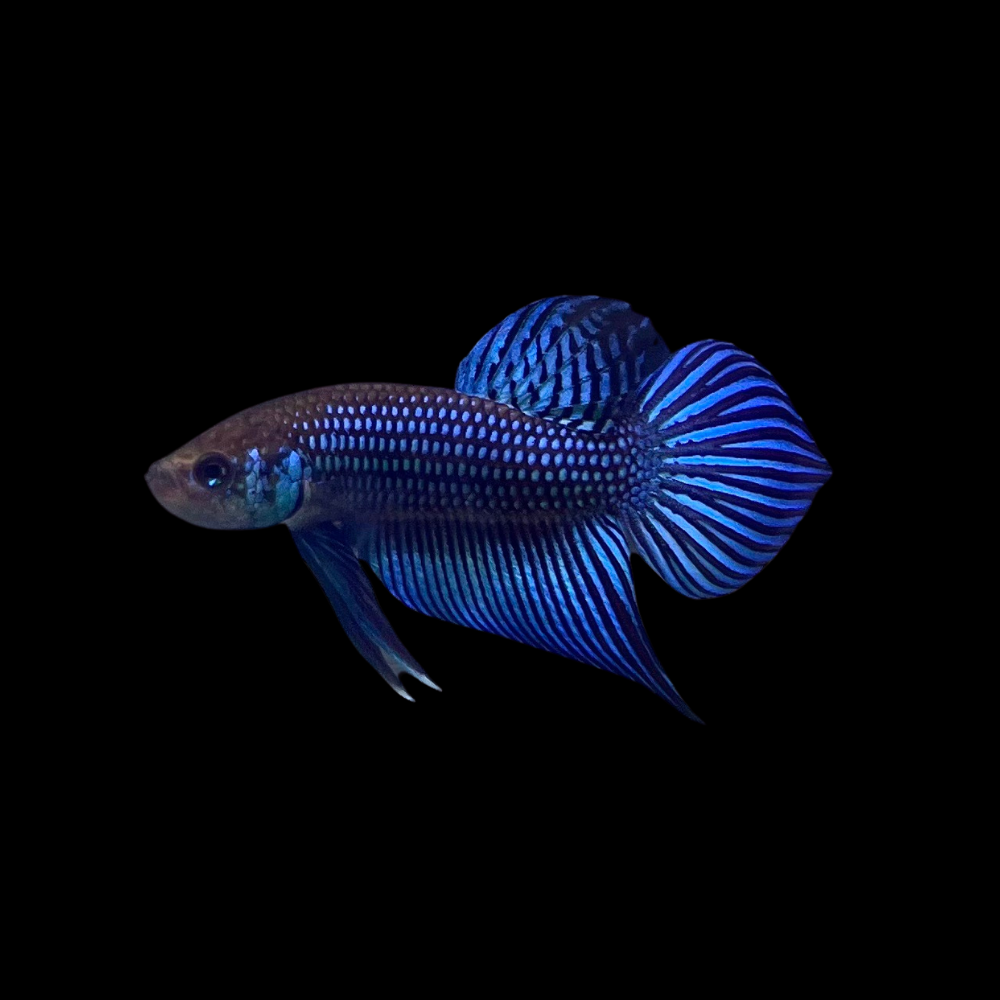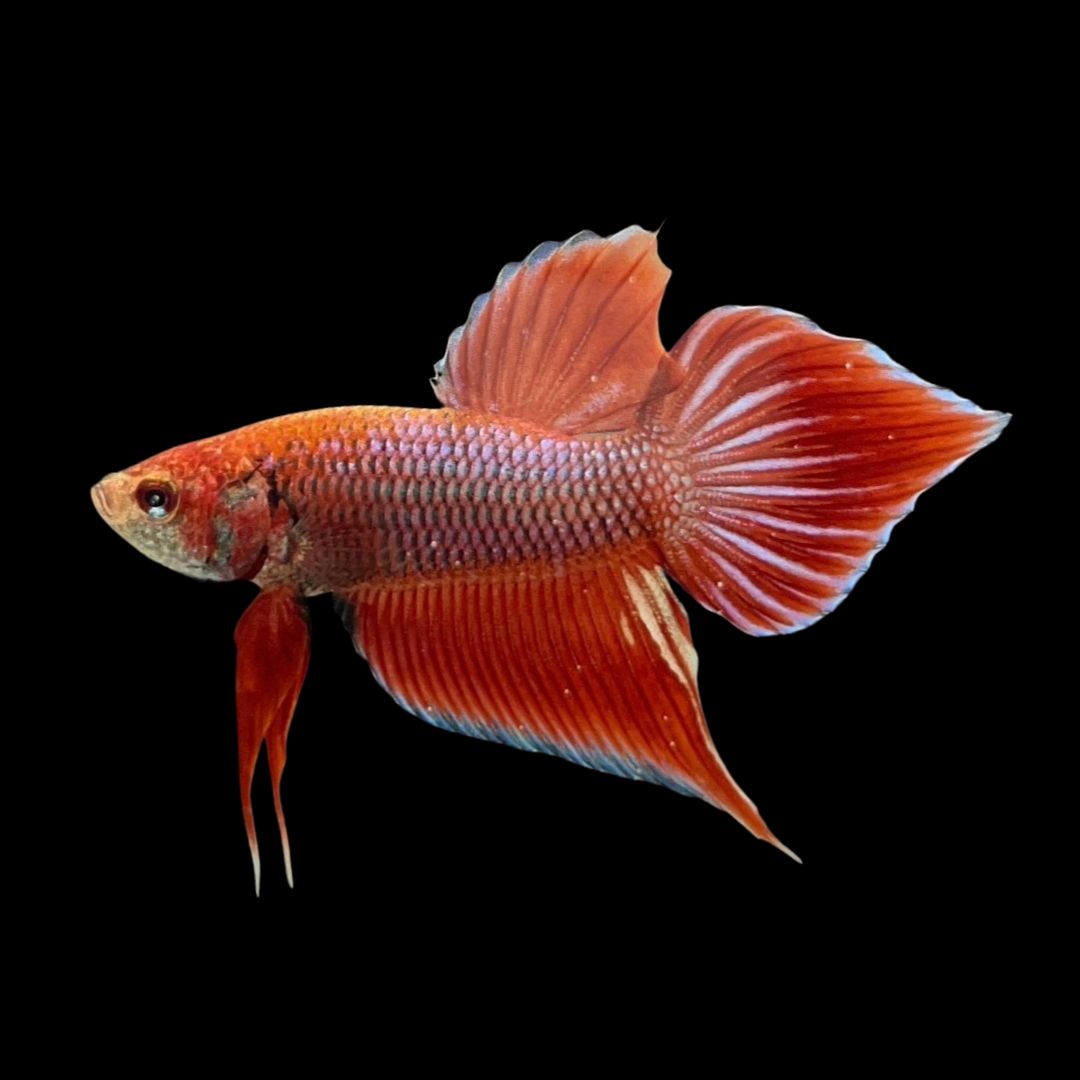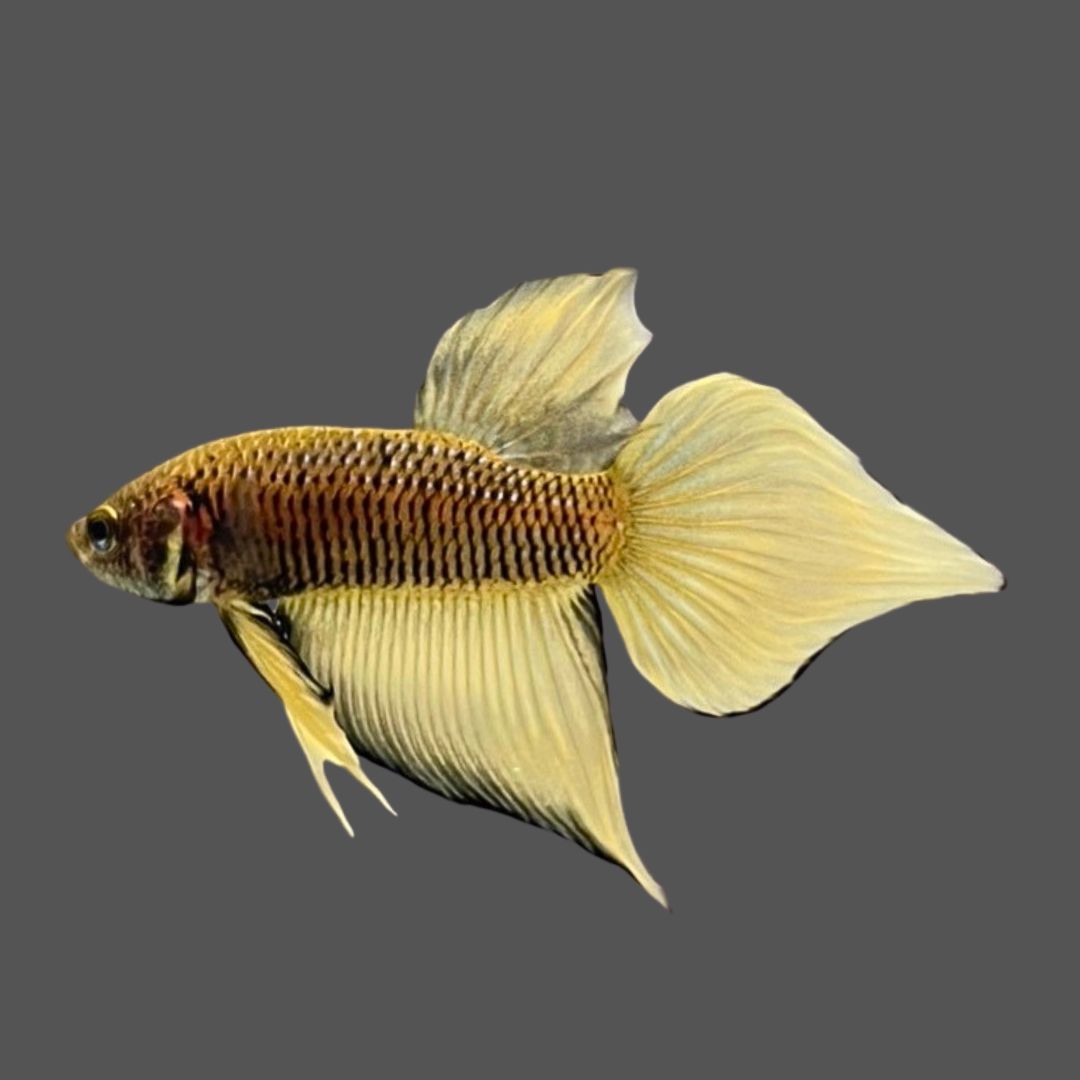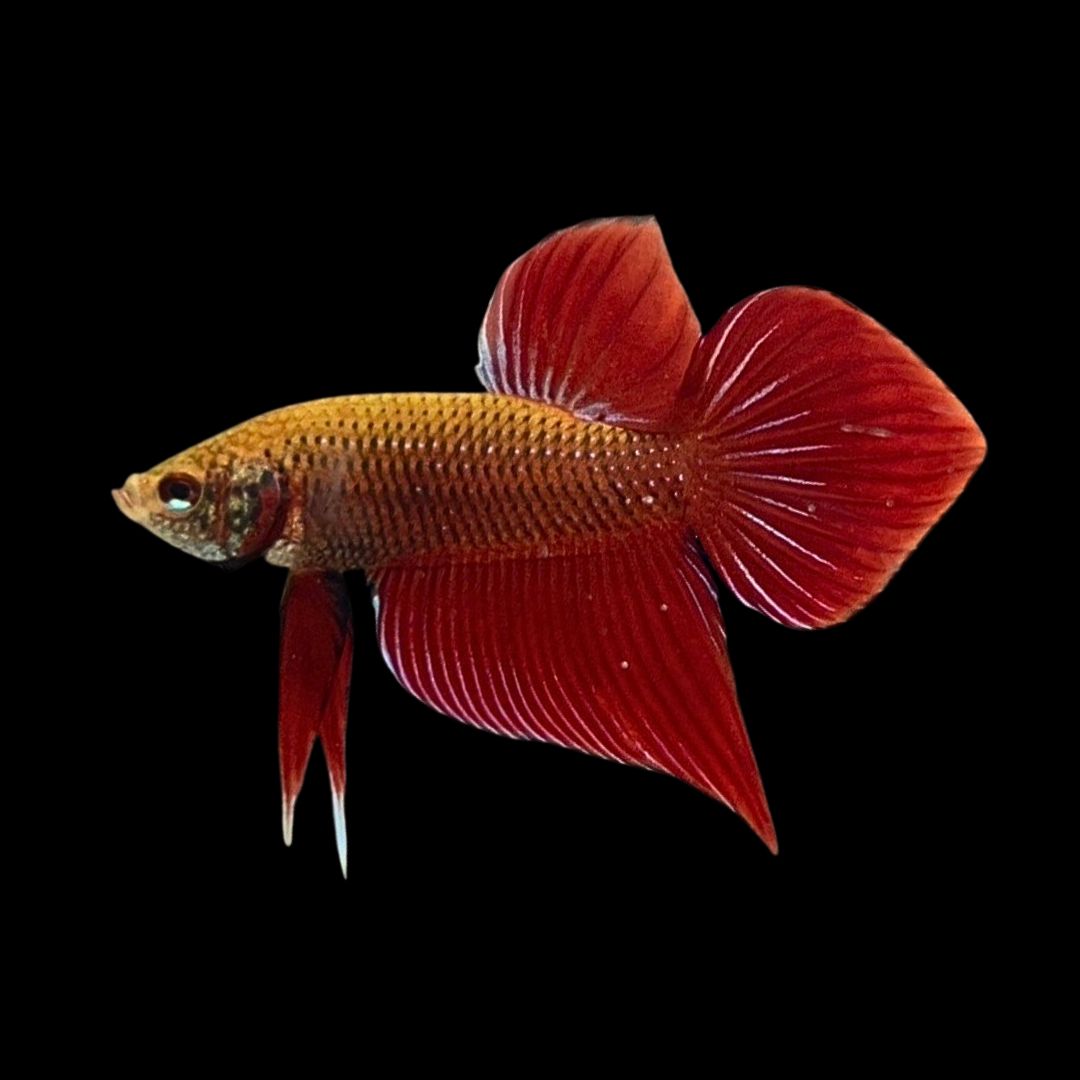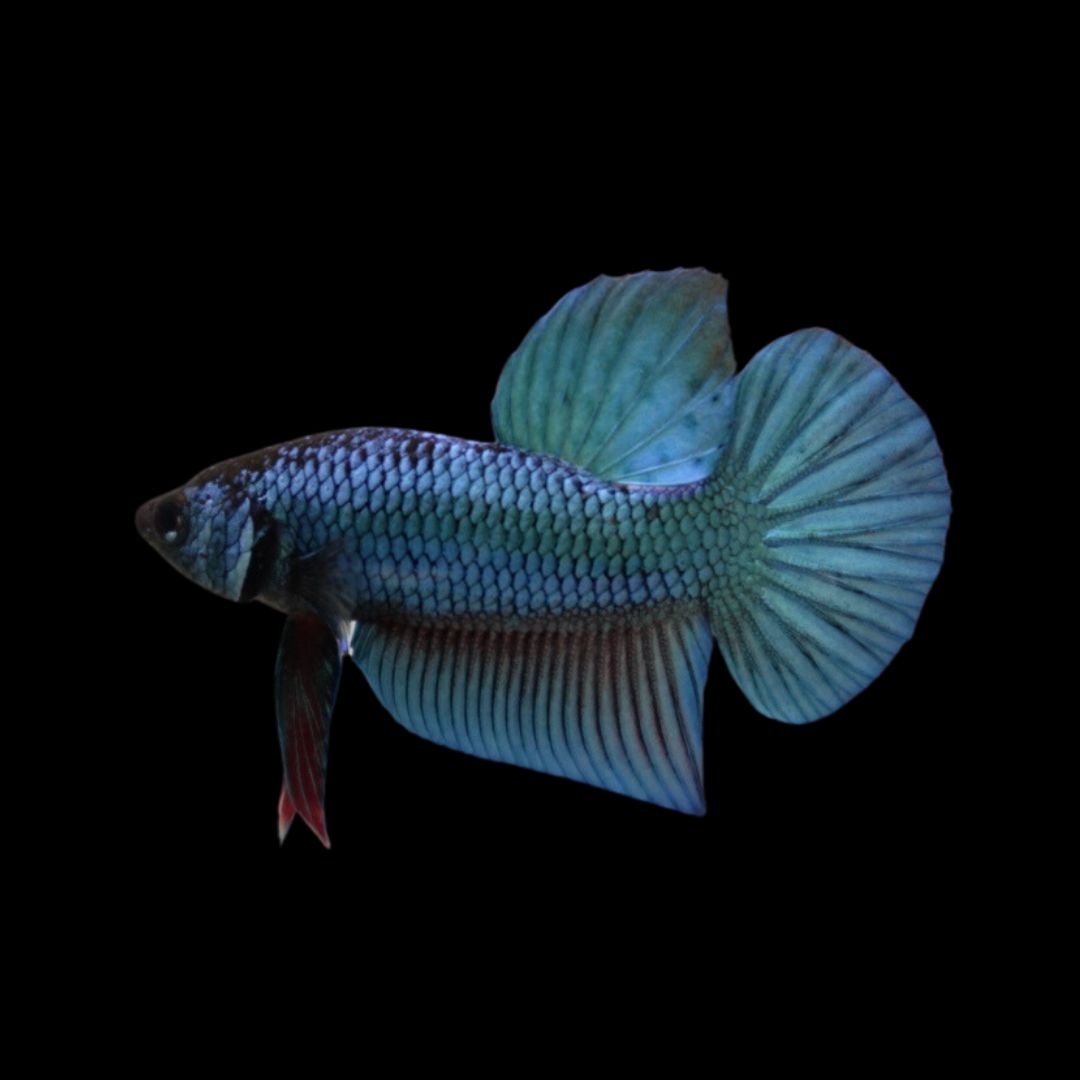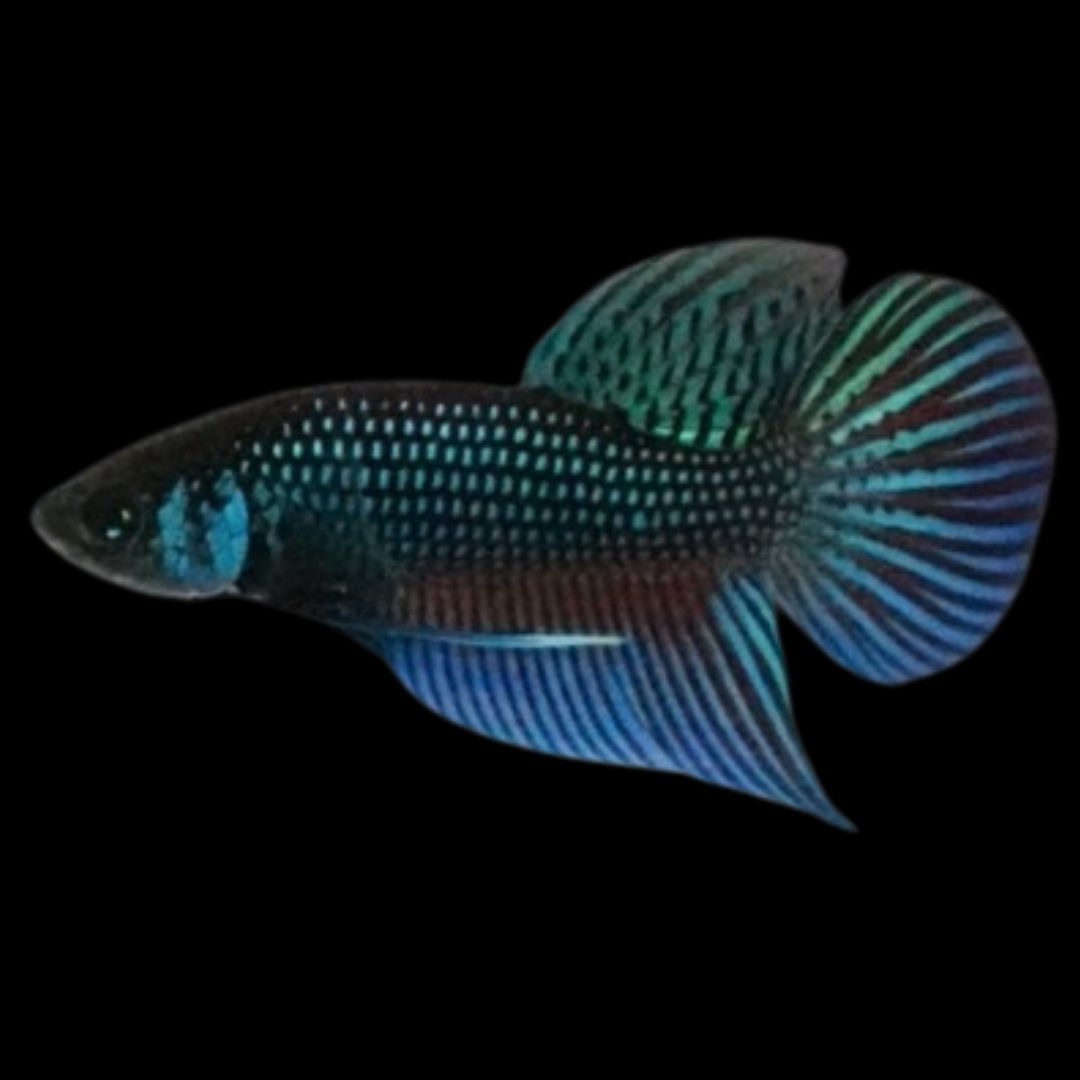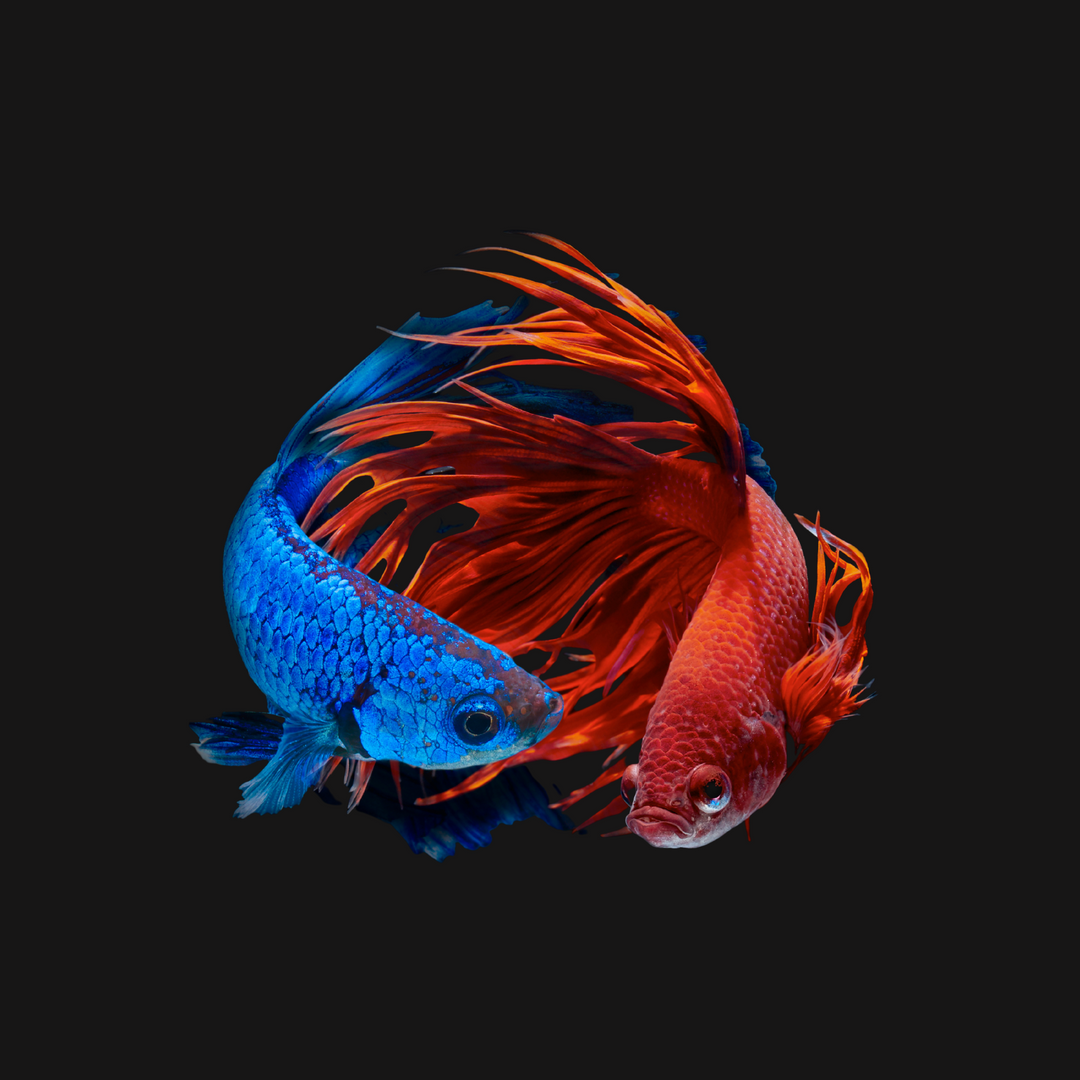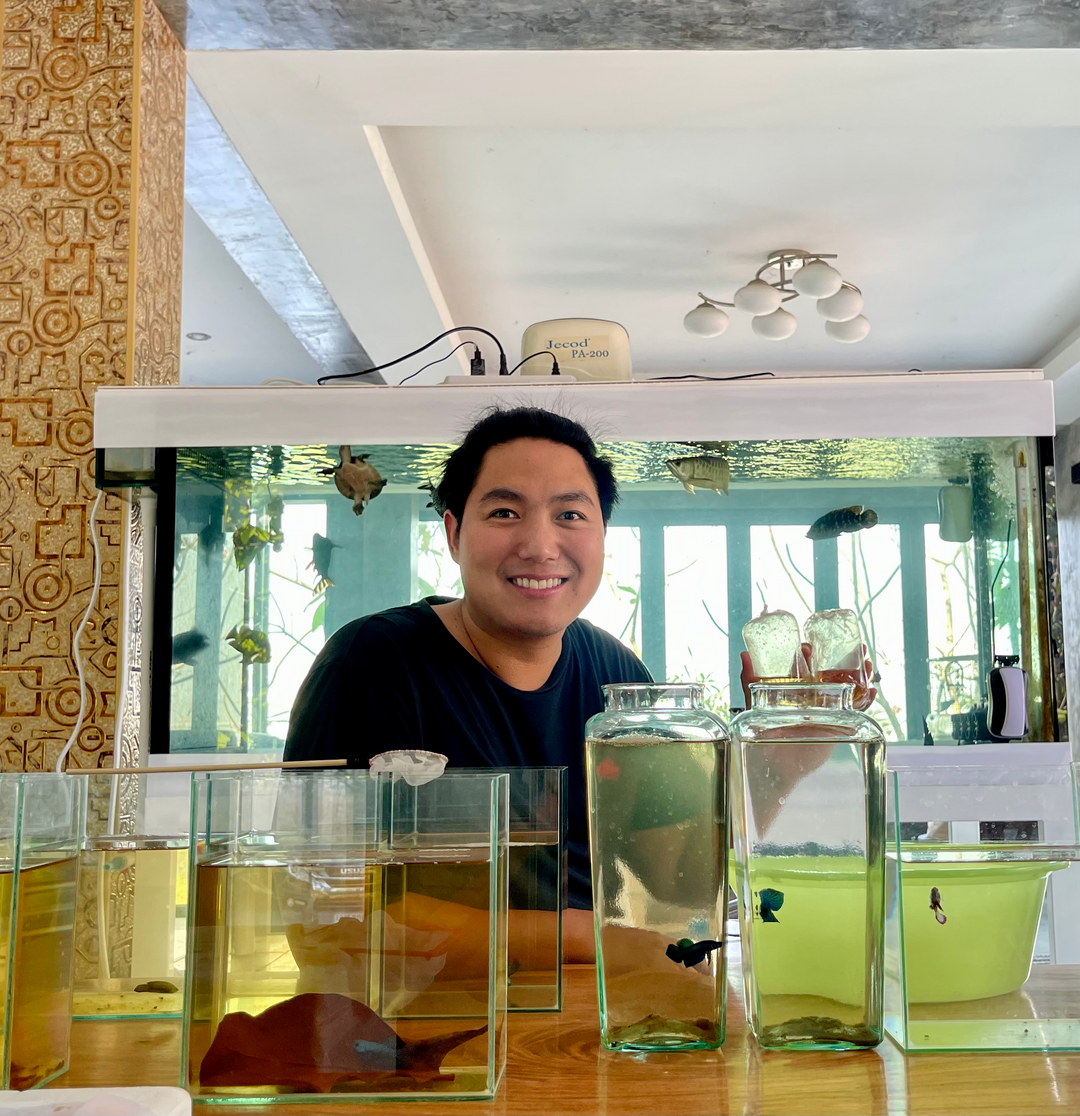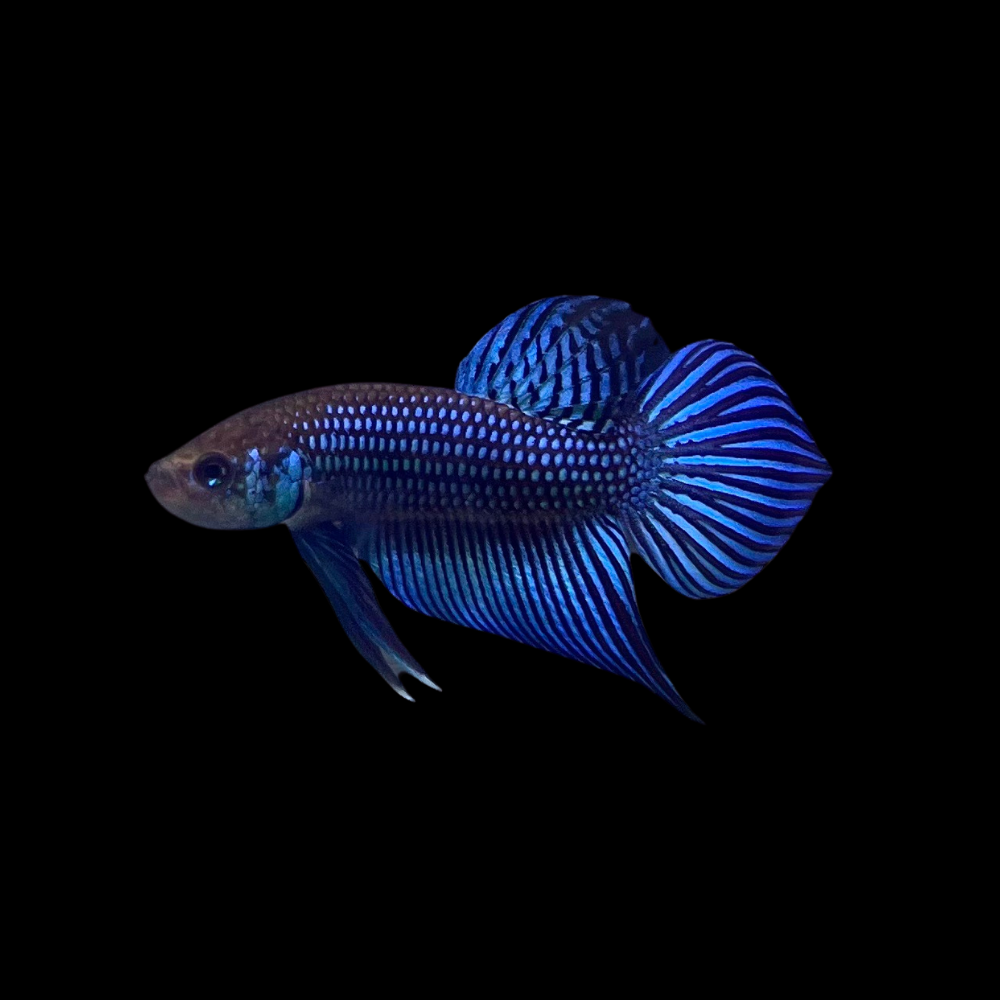
Wild
FAQs
About Wild Betta Fish
Wild Bettas refer to the various species of Betta fish found in their natural habitats, primarily in Southeast Asia. Unlike domesticated Betta splendens, wild Bettas display a range of species like Betta imbellis, Betta mahachaiensis, and Betta smaragdina. They are known for their subtler colors, smaller sizes, and different fin shapes compared to their ornamental counterparts.
The types of wild betta fish encompass a variety of Betta splendens species, each with unique characteristics and native habitats. Here's a detailed look at some of these types:
- Giant Wild Betta: Larger than most other wild Bettas, the Giant Wild Betta can grow significantly bigger, making them a standout in size and presence. They often have robust bodies and are known for their endurance and adaptability.
- Rare Wild Betta: This category includes lesser-known or less commonly found species in the wild. These Bettas are often sought after by enthusiasts for their unique traits and the rarity of encountering them in their natural habitats.
- Betta Imbellis (Peaceful Betta): Known for its relatively peaceful demeanor, Betta imbellis is often found in Thailand and Malaysia. They have subtle yet attractive coloration, usually with shades of blue and red, and are less aggressive than the common Betta splendens.
- Crescent Betta: Named for the crescent-shaped pattern often found in their tail fin, Crescent Bettas display a range of colors and are known for their graceful swimming style. They are a visually appealing species with distinct fin shapes.
- Betta Mahachaiensis: This species is notable for its resilience to brackish water conditions. Betta mahachaiensis typically has a striking coloration of green and red hues and is native to the areas around Bangkok, Thailand.
- Betta Smaragdina (Emerald Betta): Betta smaragdina, or Emerald Betta, is admired for its iridescent green coloration. They are native to the rice paddies and waterways of Southeast Asia and exhibit a more peaceful nature compared to some other Betta species.
- Betta Stiktos: A lesser-known species, Betta stiktos is distinctive for its specific habitat requirements and behavior. Like many wild Betta species, they have adapted to various environmental conditions and exhibit a range of colorations and patterns.
Each of these types of wild betta fish offers a glimpse into the incredible diversity of the Betta genus in their natural environments. From the larger Giant Wild Betta to the uniquely patterned Crescent Betta and the brilliantly colored Betta Smaragdina, these wild Bettas showcase the natural beauty and adaptability of this fascinating fish family.
The Betta Splendens natural habitat includes shallow ponds, rice paddies, and slow-moving streams in countries like Thailand, Malaysia, and Indonesia. These environments are warm, acidic, and often have low oxygen levels. Wild Bettas have adapted to these conditions with labyrinth organs, allowing them to breathe atmospheric air.
Wild Betta species differ from domestic Bettas in several ways. Wild Bettas are generally smaller, less colorful, and have shorter fins. They are also more adapted to living in groups, unlike the highly territorial domestic Betta splendens. Each wild species has unique behaviors and environmental needs.
Wild Betta breeding habits vary among species. Many build bubble nests for spawning, similar to domestic Bettas. The male prepares the nest, entices a female to spawn, then cares for the eggs and fry. Breeding in the wild is influenced by factors like season, water conditions, and availability of food.
Finding wild bettas for sale can be accomplished through various channels, both online and in physical stores. Here's how you can locate them:
- Local Aquariums and Pet Stores: Start by checking local aquariums or specialty pet stores. These places often have a selection of wild bettas or can offer advice on where to find them.
- Online Retailers and Marketplaces: Websites dedicated to aquarium hobbyists often have listings for wild bettas. These platforms provide a wide range of species and allow you to purchase from breeders and sellers across the country or even internationally.
- Fish Forums and Social Media Groups: Online communities focused on fish keeping can be a great resource. Members of these forums and groups sometimes sell wild bettas or can direct you to reputable sellers.
- Specialist Websites: For a more curated selection, visit specialist websites like Thailand Betta Fish. We offer a variety of high-quality wild bettas for sale, providing detailed information about each fish, including species, health, and origin.
Remember, when purchasing wild bettas, it's important to consider the reputation of the seller, the health and condition of the fish, and the legality of their export and import if buying from another country. Responsible sellers should prioritize the welfare of their fish and provide proper care information.
Our Legacy
We work tirelessly for 30 years to uphold the high standards set by our Thai ancestors and fellow breeders, ensuring that each and every Betta Fish for sale we produce is of the highest premium quality and meets the expectations of our customers. When you buy live betta fish online from us, you're not just purchasing a beautiful and captivating pet. You're also becoming a part of a long and rich history, and joining a community of people who appreciate and value the beauty and wonder of these amazing Betta Fish.
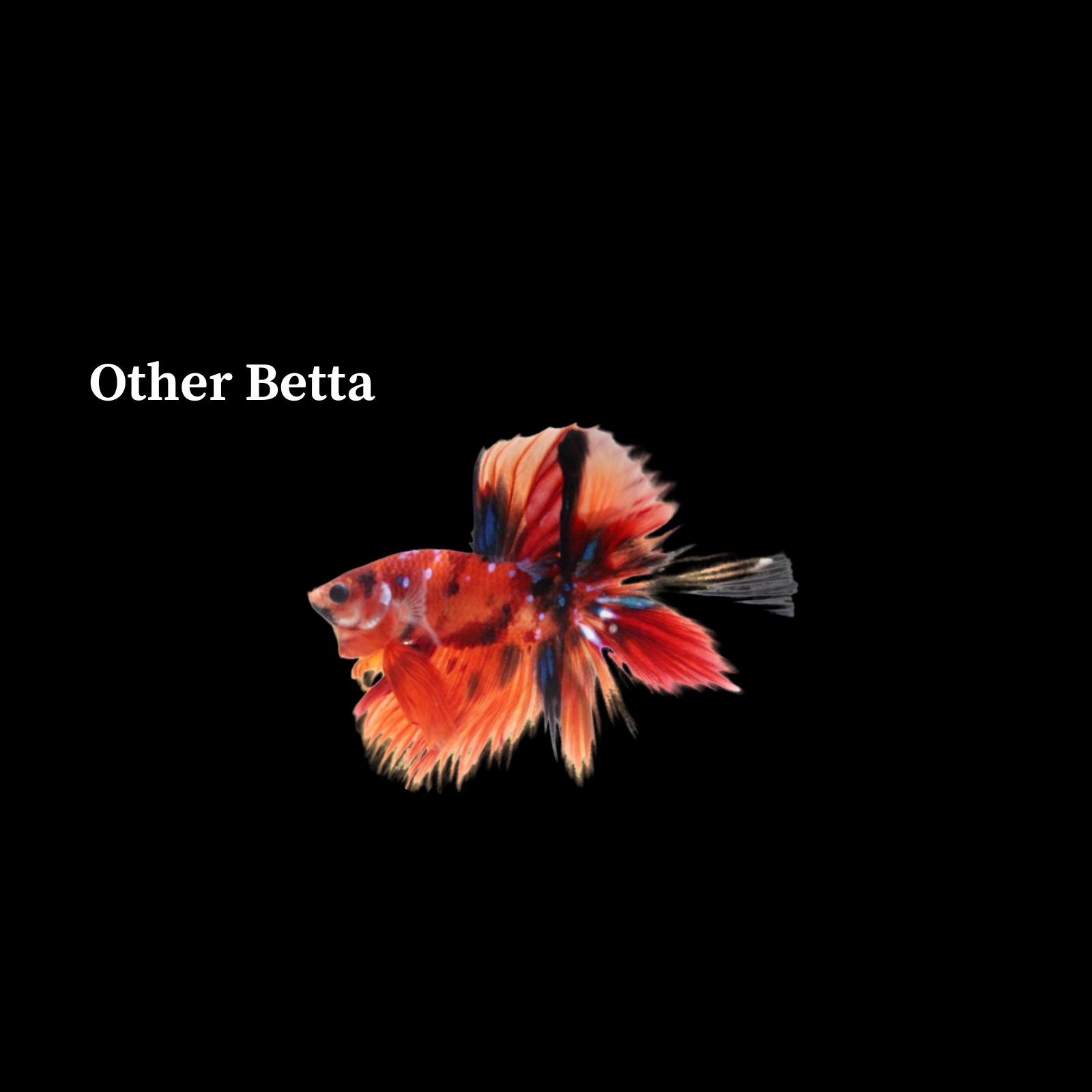
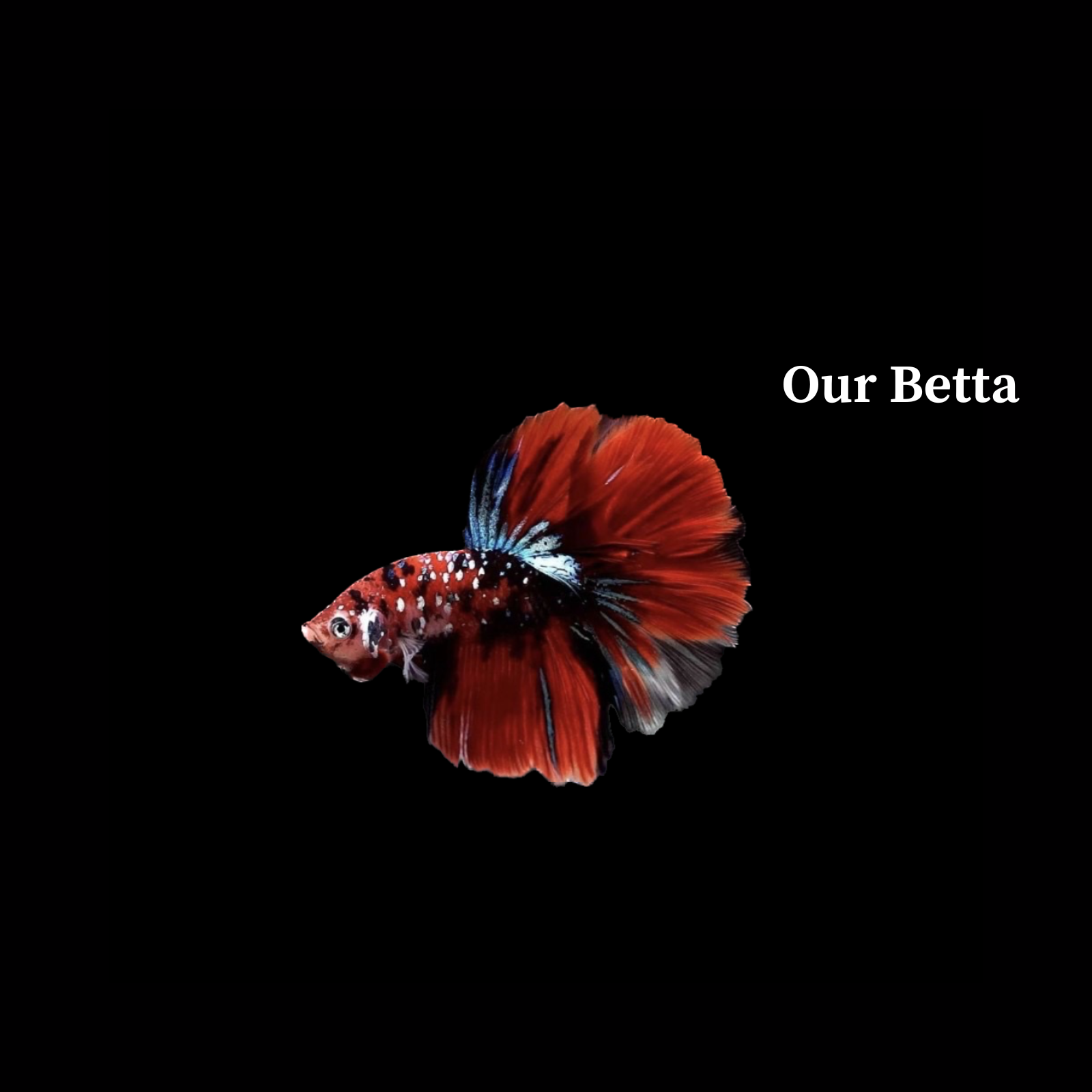
Wild Betta Fish Care Guide
Caring for Wild type Betta fish involves replicating their natural habitat. This includes a warm, slightly acidic water environment, low to moderate lighting, and plenty of hiding places with live plants. It's important to research the specific needs of the wild Betta species you have, as requirements can vary.
The Wild Betta diet typically consists of small insects, larvae, and zooplankton found in their natural habitat. In captivity, they can be fed a variety of live, frozen, or dried foods that mimic their natural diet. It's important to provide a diverse and nutritionally balanced diet.
Common Wild Betta diseases include fin rot, bacterial infections, and parasites. Prevention involves maintaining clean water conditions, providing a balanced diet, and avoiding overcrowding. Regular monitoring for signs of illness is also crucial.
The Wild Betta temperature range typically falls between 75°F and 80°F (24°C to 27°C). It's important to maintain a stable temperature within this range, as wild Bettas are sensitive to fluctuations.
To acclimate Wild Betta to a new tank, gradually introduce them to the water conditions. This can be done by slowly mixing a small amount of aquarium water into their container over a period, allowing them to adjust to the temperature and pH levels.
Wild Betta behavior in an aquarium often includes exploring, establishing territory, and displaying natural breeding behaviors. Some species may show shyness or hiding tendencies initially, but with proper environment and care, they generally adapt well to aquarium life.
Whether Wild Betta can coexist with other fish depends on the species and individual temperament. Many wild Bettas are less territorial than domestic Bettas and can live with other peaceful and similarly sized fish, provided the tank is sufficiently large with plenty of hiding places.
To breed Wild Betta fish, replicate their natural breeding conditions, including water parameters and temperature. Provide a separate breeding tank, introduce a conditioned male and female, and observe for spawning behavior. Post-spawning, care for the fry with appropriate food and water conditions.
Keeping a Betta imbellis hybrid requires special considerations to ensure their health and well-being. Betta imbellis, commonly known as the Peaceful Betta, is known for its less aggressive nature compared to the typical Betta splendens. When dealing with hybrids, it's essential to consider the following:
- Tank Setup: Create a well-planted tank with hiding spots to mimic their natural habitat. This setup helps reduce stress and provides a comfortable environment.
- Water Conditions: Maintain stable water parameters, with temperatures between 75°F and 80°F (24°C to 27°C), and a pH level of 6.0 to 7.5. Regular water changes are essential for cleanliness.
- Diet: Offer a varied diet that includes high-quality pellets and live or frozen foods like brine shrimp and bloodworms to ensure proper nutrition.
- Tank Size and Companions: A minimum 5-gallon tank is recommended. Choose peaceful and small tank mates to avoid aggression and fin nipping.
- Behavior and Health Monitoring: Regularly observe their behavior for signs of stress or illness, as hybrid Bettas may have different health and behavioral traits.
Betta fish, particularly male Bettas, are known for their territorial and aggressive nature, especially towards other males. However, whether a Betta fish will eat other fish depends on various factors including the size and type of both the Betta and the other fish.
- Size and Type of Fish: Bettas are unlikely to eat fish that are larger or equal in size to them. They may attempt to attack or nip at smaller fish, particularly those with long fins or bright colors that resemble another Betta. However, eating them entirely is less common.
- Tank Environment: In a well-set-up aquarium with ample space, hiding spots, and adequate food, Bettas are less likely to exhibit aggressive feeding behavior towards other fish. Crowded or stressful conditions can increase the likelihood of aggression.
- Diet: Bettas are primarily insectivores and their diet typically consists of insects and larvae. In an aquarium setting, they are usually fed pellets, flakes, and occasional live or frozen foods like bloodworms or brine shrimp.
- Compatibility: Some fish species are more compatible with Bettas and less likely to be attacked. It's important to research and understand which species can coexist peacefully with Bettas.


